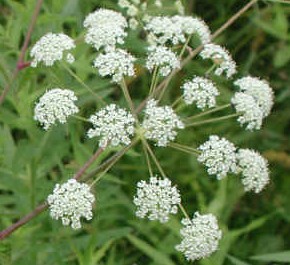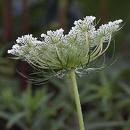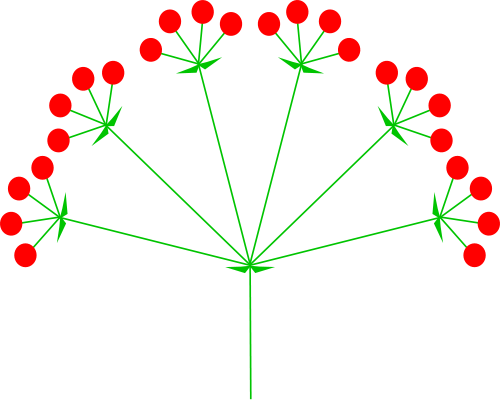 Also known as the Apiaceae and Umbelliferae, the parsley family consists primarily of herbaceous annuals, biennials, and perennials, and a few shrubs and trees. In addition to parsley, the family includes many herbs such as dill, fennel, caraway, cumin, cicely, chervil, angelica, lovage, and anise as well as vegetables such as celery, carrots, and parsnips. Queens Anne’s Lace, masterwort (Astrantia major), and sea holly (Eryngiaum spp.) are valued for their attractive flowers. Two members of the family, however, poison hemlock and water hemlock are deadly poisonous. They are not related to hemlock trees and do not resemble them but can be confused with non-poisonous members of the parsley family.
Also known as the Apiaceae and Umbelliferae, the parsley family consists primarily of herbaceous annuals, biennials, and perennials, and a few shrubs and trees. In addition to parsley, the family includes many herbs such as dill, fennel, caraway, cumin, cicely, chervil, angelica, lovage, and anise as well as vegetables such as celery, carrots, and parsnips. Queens Anne’s Lace, masterwort (Astrantia major), and sea holly (Eryngiaum spp.) are valued for their attractive flowers. Two members of the family, however, poison hemlock and water hemlock are deadly poisonous. They are not related to hemlock trees and do not resemble them but can be confused with non-poisonous members of the parsley family.
Two major characteristics distinguish the family. The family name Umbelliferae gives a clue to the most easily recognized characteristic of the family.
 The flowers are borne in umbels, usually compound umbels.
The flowers are borne in umbels, usually compound umbels.
The word “umbel” comes from the Latin word “umbella” meaning parasol. The flower heads of the parsley family consist of little parasols of small flowers arranged on a single main stem to form a larger parasol or umbrella.
To be a true umbel all the stems of the flowers must join at the exact same point on the stem. This is what distinguishes an umbel from other kinds of flower heads (inflorescences).


 The stems are hallow
The stems are hallow
Additional characteristics include five stamens and five petals, both attached to the top of the ovary. The fruit consists of two parts that contain one seed each. Leaves are variable in size, texture, shape, and arrangement so are not particularly helpful in identification.
There are about 300 genera and 3,000 species in the family, with about 75 genera native to North America.
